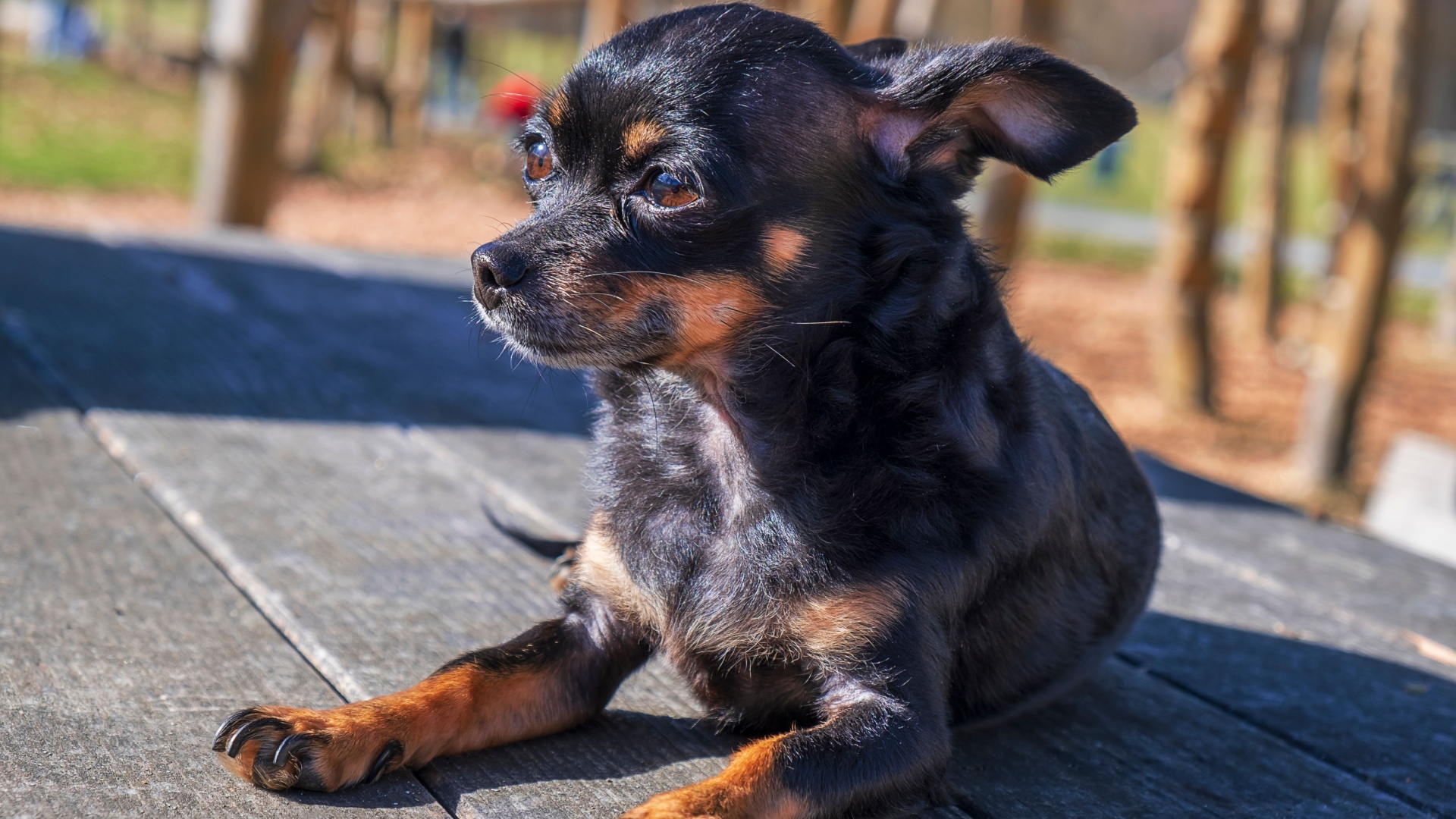The Chihuahua breed wouldn’t be the same without its signature coat markings and patterns. Most single-colored Chihuahuas hold a surprise among the uniform coat colors — a white marking!
Do all Chihuahuas inherit only white markings or is there more to their coat colors than just plain white?
Of course there is! Not only do Chis inherit big chunks of color patches, but they also inherit the so-called “splashed colors”.
1. Black Brindling
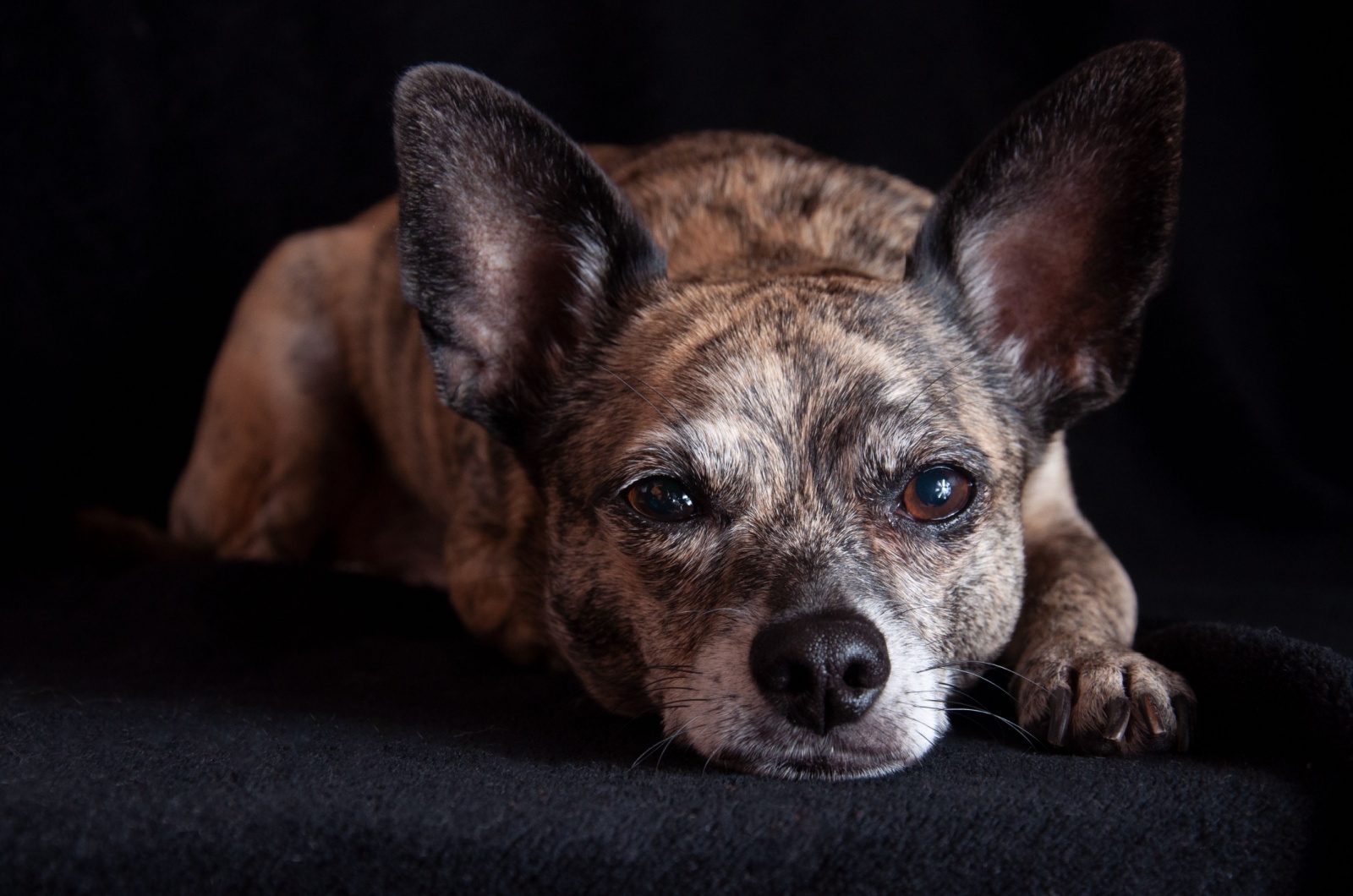
A black brindle Chihuahua dog coat features a high concentration of darker stripes. It is also called a “reverse brindle”.
Reverse brindle Chihuahua dogs have the appearance of light stripes on a black base coat color. Think of it as tiger stripes on a small dog!
2. Black Mask
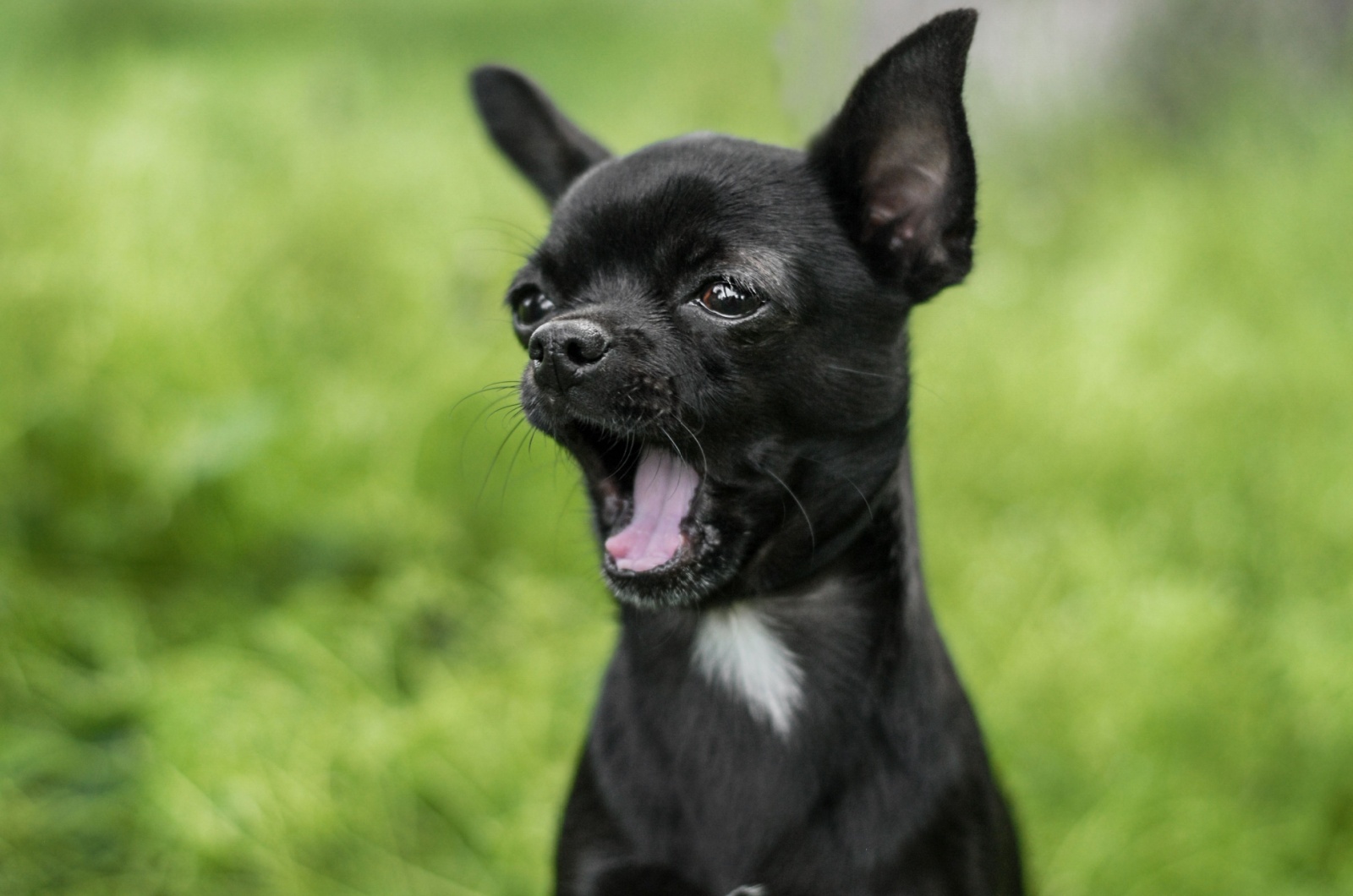
A black mask is also called a “melanistic mask”. It is a dog coat pattern that resembles a mask on the Chi’s face. It is also known as black masking.
Canines that inherit the distinctive black mask pattern are either red, yellow, tan, fawn, or brindle dogs.
Instead of red pigment, the hairs located on the muzzle (or the entire face) are caused by the black pigmentation gene, hence the “black mask”.
The black mask is inherited as a dominant characteristic in several dog breeds colors like German Shepherd, Great Dane, Akita Inu, Pug, and Bullmastiff.
3. Black Sabling
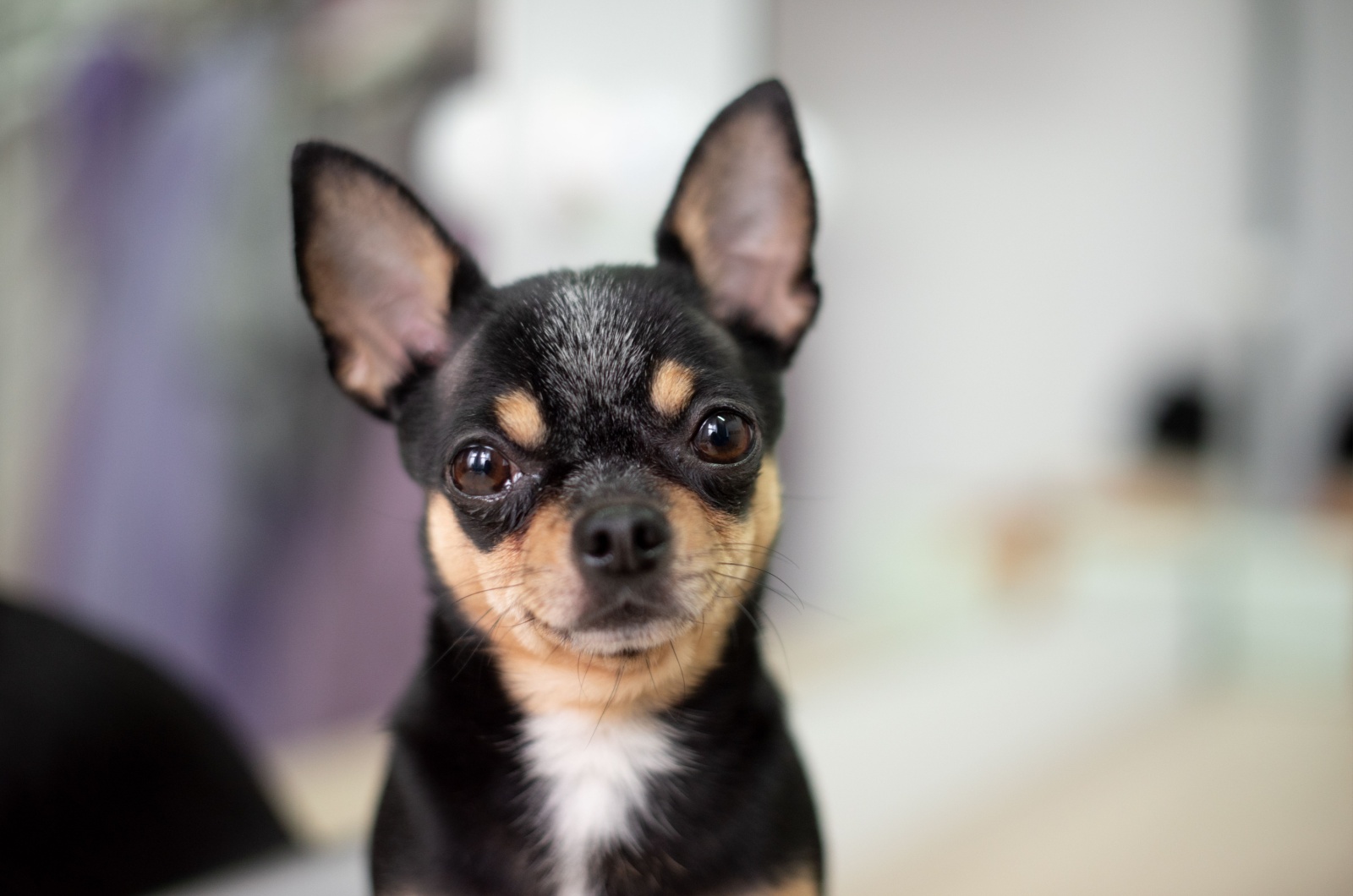
The best way to describe black sabling is by describing the sable marking as long black hairs that are blended in with the primary hue.
Black dogs are considered sable if they have lighter colored roots of their hair. Black sabling is a coat marking that appears to be a hue of brown and is pretty close to black.
Black sable hue is typically seen as a neutral color due to its brown undertones. With time, the black normally becomes lighter and fades.
The black sabling, though, can continue to be pretty thick and not fade off as much. Black sabling typically a marking that is mixed with the fawn base color of an overcoat.
4. Merle Markings

The only way a Chihuahua with merle markings (merle Chihuahua) can exist is if it carries genes from another dog breed. This is because purebred Chihuahuas never had nor produced any merle puppies — it’s not in their genes.
Although merle markings are permitted under the American Kennel Club registration rules, the United Kennel Club disqualifies merle Chis. Even the Chihuahua Club of America is not fond of merle Chihuahuas.
Merle Chi not being a purebred dog is one reason, here’s the other.
Due to the fact that the merle marking gene lightens and whitens the pigmentation of the merle Chihuahua—causing the pigment in the ears and eyes to also lighten—is another issue with this marking.
Merle Chi markings are connected to a number of health problems such as: Skin cancer, Hearing impairment (deafness), Vision impairment (blindness), Iris Coloboma, Canine Microphthalmia, Canine Microcoria, Merle ocular dysgenesis.
These health issues mostly occur later in life of merle dogs. And, not all merle Chihuahuas inherit these health problems. There is a high chance that they will develop if a merle Chihuahua puppy has two merle parents.
5. Spotted On White
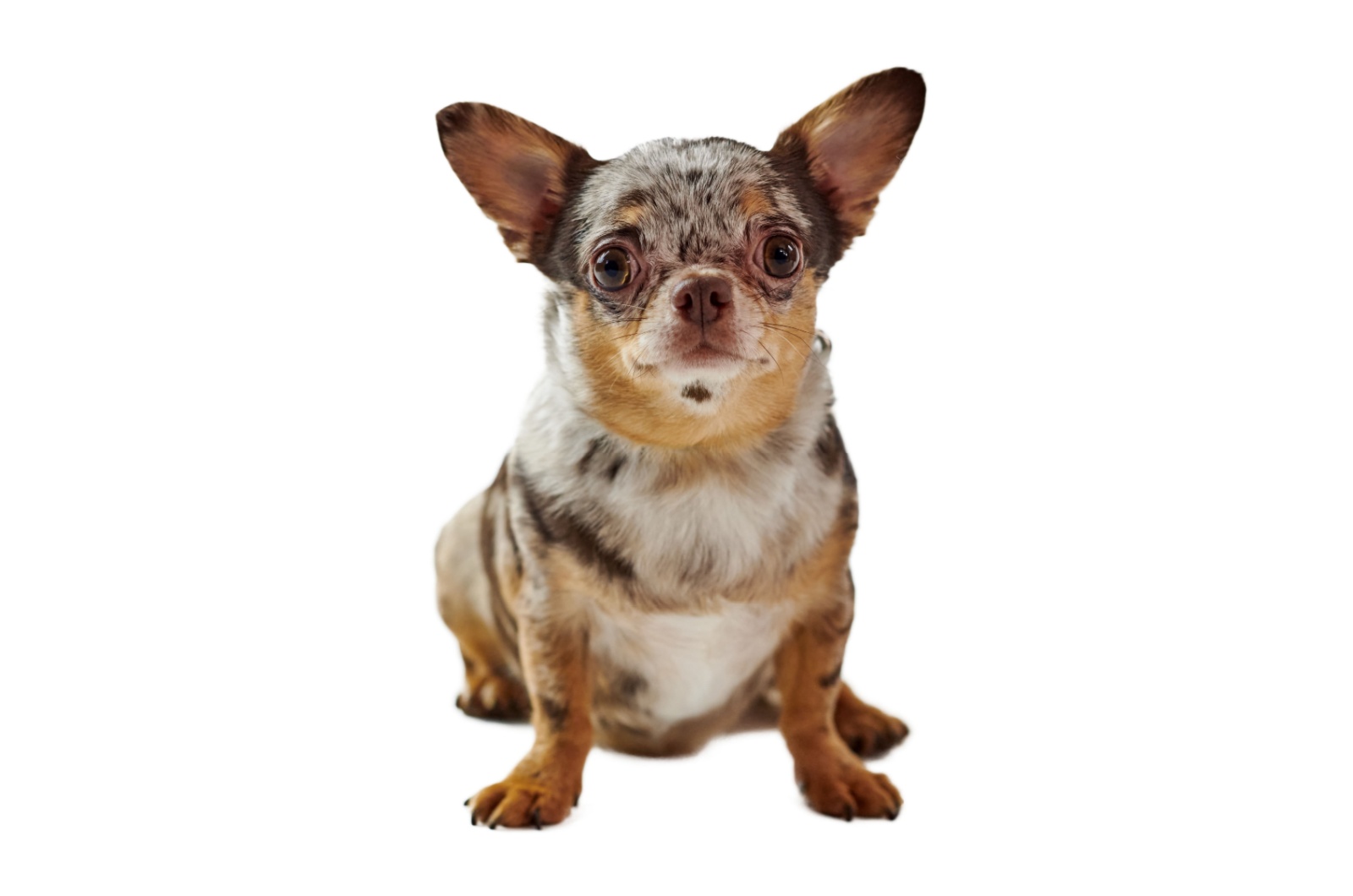
To see a Chihuahua with a Dalmatian-like coat is both unique and beautiful!
Piebald spotting is another name for the white spotting pattern that appears on white with black spots.
There are numerous spotting hues that can be liver, red, dark brown, chocolate or black and white spotted. We refer to a Chihuahua dog as being tricolored if it has distinct colored spots on its white base coat.
Congenital health problems can affect Piebald Chihuahuas just like they can their Merle counterparts.
These types of genes that are carrying the coloring are linked to ear and eye issues, including blindness and deafness. Because of this, certain breed registries have banned these hues.
6. White Markings
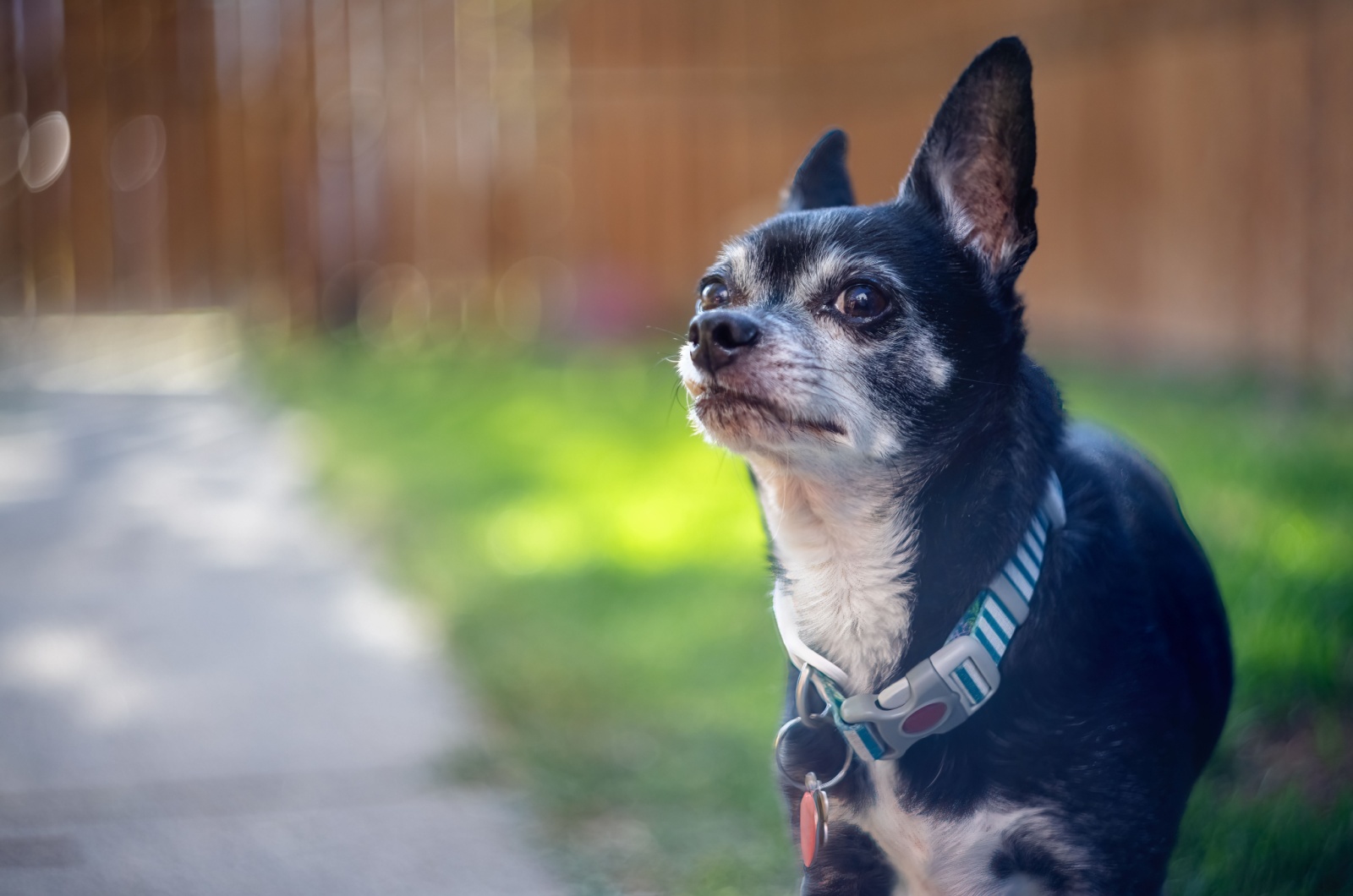
White markings are quite common in the Chihuahua dog breed.
There can be a different amount of white markings on a Chihuahua’s body. It can range from zero to a completely covered body. In the case when white covers the whole Chi’s body, we are then referring to a white Chihuahua.
Surprisingly, what causes the color gene responsible for the development of white markings is a piebald gene, which is recessive.
So, a Chihuahua dog with one white gene will have half or one third of its body colored in white markings, whereas a Chi with two white genes is mostly or entirely white. Chihuahua muzzles, like black masks, can be decorated with white markings.
7. Black Mask With White Markings
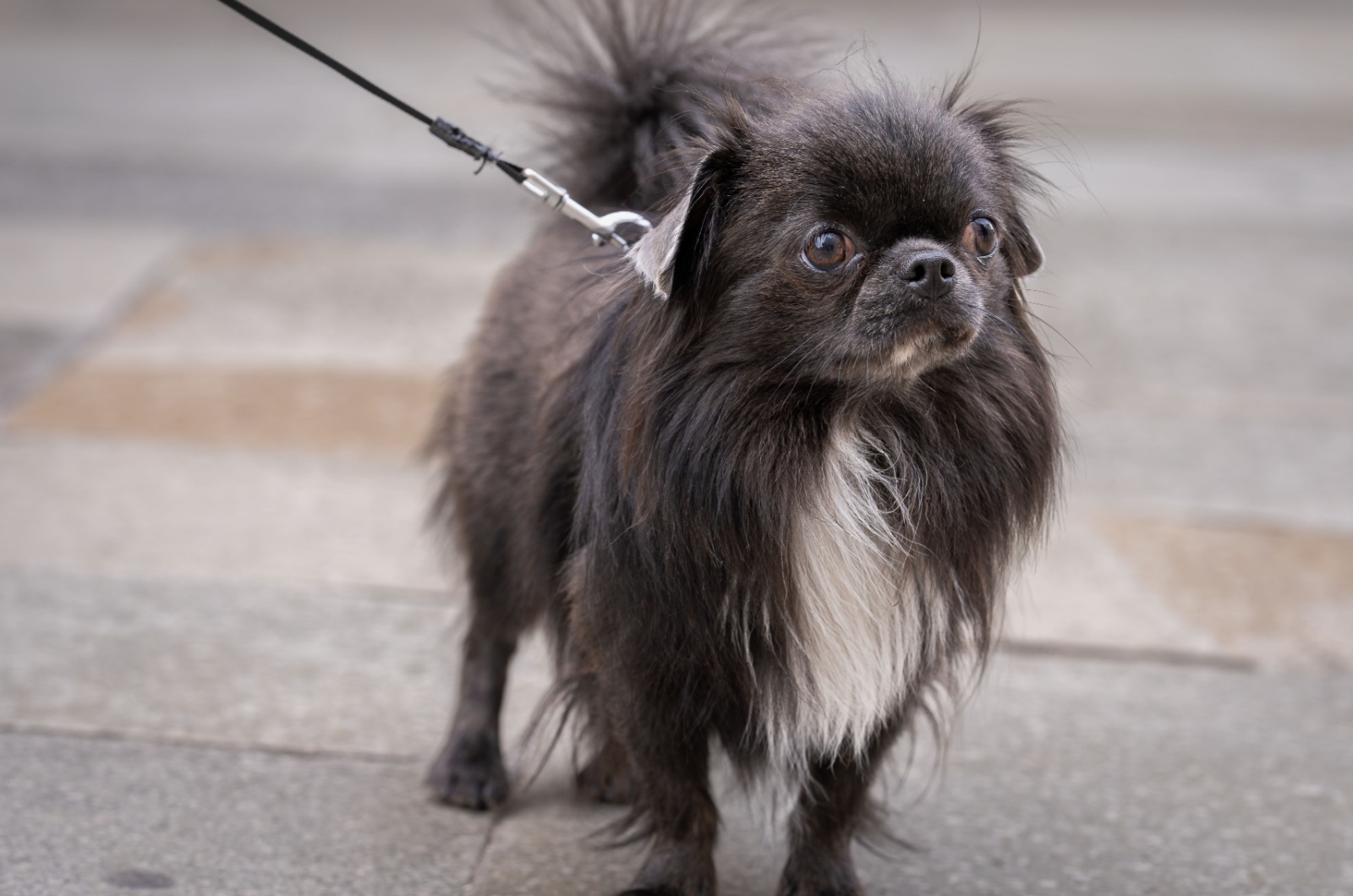
A Chihuahua puppy inherits is black mask that colors its muzzle and the area around the eyes. White is usually located across the chest.
The base of their coat could be in a different color. The majority of Chihuahua dogs with these markings have a fawn base. Black masked Chis with white markings among the rarest pups in the breed.

